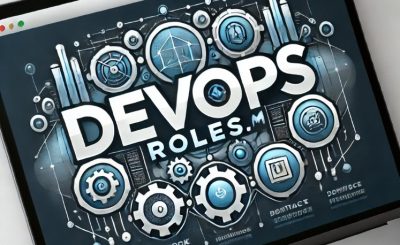Table of Contents
Introduction
Kubernetes is the backbone of modern containerized applications, handling everything from deployment to scaling with ease. However, with this complexity comes the need for powerful monitoring tools. Monitoring your Kubernetes clusters is critical for ensuring performance, detecting issues early, and optimizing resource usage.
In this blog, we’ll take a deep dive into Kubernetes monitoring tools, exploring both basic and advanced options, so you can find the best fit for your needs-whether you’re just starting with Kubernetes or managing large-scale production environments.
What is Kubernetes Monitoring?
Kubernetes monitoring involves gathering data about your system, including metrics, logs, and traces. This data gives insight into how well your clusters are performing, and helps you identify and solve issues before they affect end users. Monitoring Kubernetes involves tracking:
- Node metrics: CPU, memory usage, and disk I/O on individual nodes.
- Pod and container metrics: The health and performance of containers and pods.
- Kubernetes control plane: Monitoring critical components like the API server and etcd.
- Network performance: Monitoring throughput and network latency across the cluster.
- Logs and distributed traces: Logs for troubleshooting and traces to track how requests are processed.
The Best Kubernetes Monitoring Tools
1. Prometheus
Prometheus is an open-source monitoring tool that has become the default choice for Kubernetes monitoring. It pulls in metrics from your clusters, and its powerful PromQL query language allows you to extract meaningful insights from the data.
Why Prometheus?
Prometheus integrates seamlessly with Kubernetes, automatically discovering and collecting metrics from services and containers. It’s flexible and scalable, with a wide ecosystem of exporters and integrations.
- Key Features: Metrics collection via service discovery, PromQL, and alerting.
- Pros: Easy to scale, robust community support.
- Cons: Lacks native log and trace management, requires additional tools for these functionalities.
2. Grafana
Grafana is a visualization tool that pairs perfectly with Prometheus. It allows you to create interactive dashboards, making it easier to visualize complex metrics and share insights with your team.
Why Grafana?
Grafana’s ability to pull data from multiple sources, including Prometheus, InfluxDB, and Elasticsearch, makes it a versatile tool for creating rich, detailed dashboards.
- Key Features: Custom dashboards, alerting, plugin ecosystem.
- Pros: Great for data visualization, supports multiple data sources.
- Cons: Can become resource-intensive with large datasets.
3. Datadog
Datadog is a fully-managed SaaS monitoring tool that provides out-of-the-box Kubernetes monitoring. It combines metrics, logs, and traces into one platform, offering a comprehensive view of your environment.
Why Datadog?
Datadog excels in cloud-native environments, with deep integration across AWS, Azure, and GCP. It automatically collects Kubernetes metrics and provides advanced monitoring capabilities like container and application performance monitoring.
- Key Features: Kubernetes monitoring, log management, container insights.
- Pros: Easy setup, integrated platform for metrics, logs, and traces.
- Cons: Can be costly for large environments.
4. ELK Stack (Elasticsearch, Logstash, Kibana)
The ELK Stack is a popular open-source tool for centralized logging. It collects logs from Kubernetes and allows you to analyze them with Elasticsearch, visualize them with Kibana, and process them with Logstash.
Why ELK Stack?
The ELK Stack is ideal for organizations needing deep log analysis. It provides powerful search and filtering capabilities to find specific events or trends in your Kubernetes logs.
- Key Features: Centralized logging, log search, and filtering.
- Pros: Excellent for log aggregation and analysis.
- Cons: Complex to set up, resource-heavy.
5. Jaeger
Jaeger is a distributed tracing tool designed for monitoring the performance of microservices-based applications in Kubernetes. It’s essential for debugging latency issues and understanding how requests flow through different services.
Why Jaeger?
Jaeger tracks requests across your services, helping you identify bottlenecks and optimize performance in microservices environments.
- Key Features: Distributed tracing, performance optimization.
- Pros: Great for debugging complex microservices architectures.
- Cons: Requires setup and configuration for large-scale environments.
6. Thanos
Thanos builds on top of Prometheus, providing scalability and high availability. It’s perfect for large, distributed Kubernetes environments that require long-term metrics storage.
Why Thanos?
Thanos is a highly scalable solution for Prometheus, offering long-term storage, global querying across clusters, and high availability. It ensures data is always available, even during downtime.
- Key Features: Global query view, long-term storage, high availability.
- Pros: Scalable for large production environments.
- Cons: More complex to set up and manage than Prometheus alone.
7. Cortex
Cortex, like Thanos, is designed to scale Prometheus. However, Cortex adds multi-tenancy support, making it ideal for organizations that need to securely store metrics for multiple users or teams.
Why Cortex?
Cortex allows multiple tenants to securely store and query Prometheus metrics, making it an enterprise-grade solution for large-scale Kubernetes environments.
- Key Features: Multi-tenancy, horizontal scalability.
- Pros: Ideal for multi-team environments, scalable.
- Cons: Complex architecture.
Frequently Asked Questions (FAQs)
What are the best Kubernetes monitoring tools for small clusters?
Prometheus and Grafana are excellent for small Kubernetes clusters due to their open-source nature and minimal configuration needs. They provide powerful monitoring without the cost or complexity of enterprise-grade solutions.
Is logging important in Kubernetes monitoring?
Yes, logs provide critical insights for troubleshooting and debugging issues in Kubernetes. Tools like the ELK Stack and Datadog are commonly used for log management in Kubernetes environments.
Can I use multiple Kubernetes monitoring tools together?
Absolutely. Many teams use a combination of tools. For example, you might use Prometheus for metrics, Grafana for visualization, Jaeger for tracing, and the ELK Stack for logs.
What’s the difference between Prometheus and Thanos?
Prometheus is a standalone monitoring tool, while Thanos extends Prometheus by adding long-term storage, high availability, and the ability to query across multiple clusters.
How do I get started with Kubernetes monitoring?
The easiest way to get started is by deploying Prometheus and Grafana with Helm charts. Helm automates much of the setup and ensures that the monitoring tools are configured correctly.

Conclusion
Effective monitoring is the key to maintaining a healthy, performant Kubernetes cluster. Whether you’re just starting out or managing a large-scale environment, the tools outlined in this guide can help you monitor, optimize, and scale your infrastructure. By using the right tools-like Prometheus, Grafana, and Thanos-you can ensure that your Kubernetes clusters are always performing at their best. Thank you for reading the DevopsRoles page!

